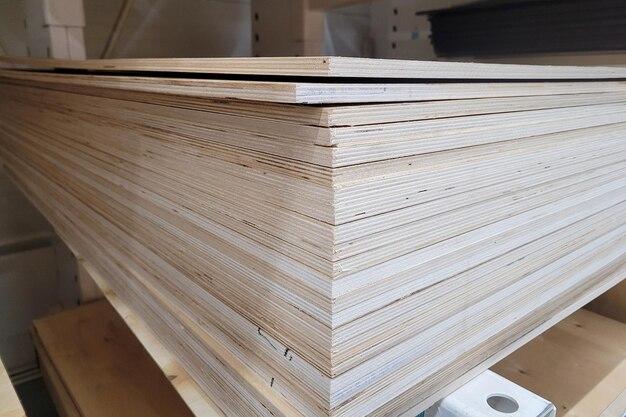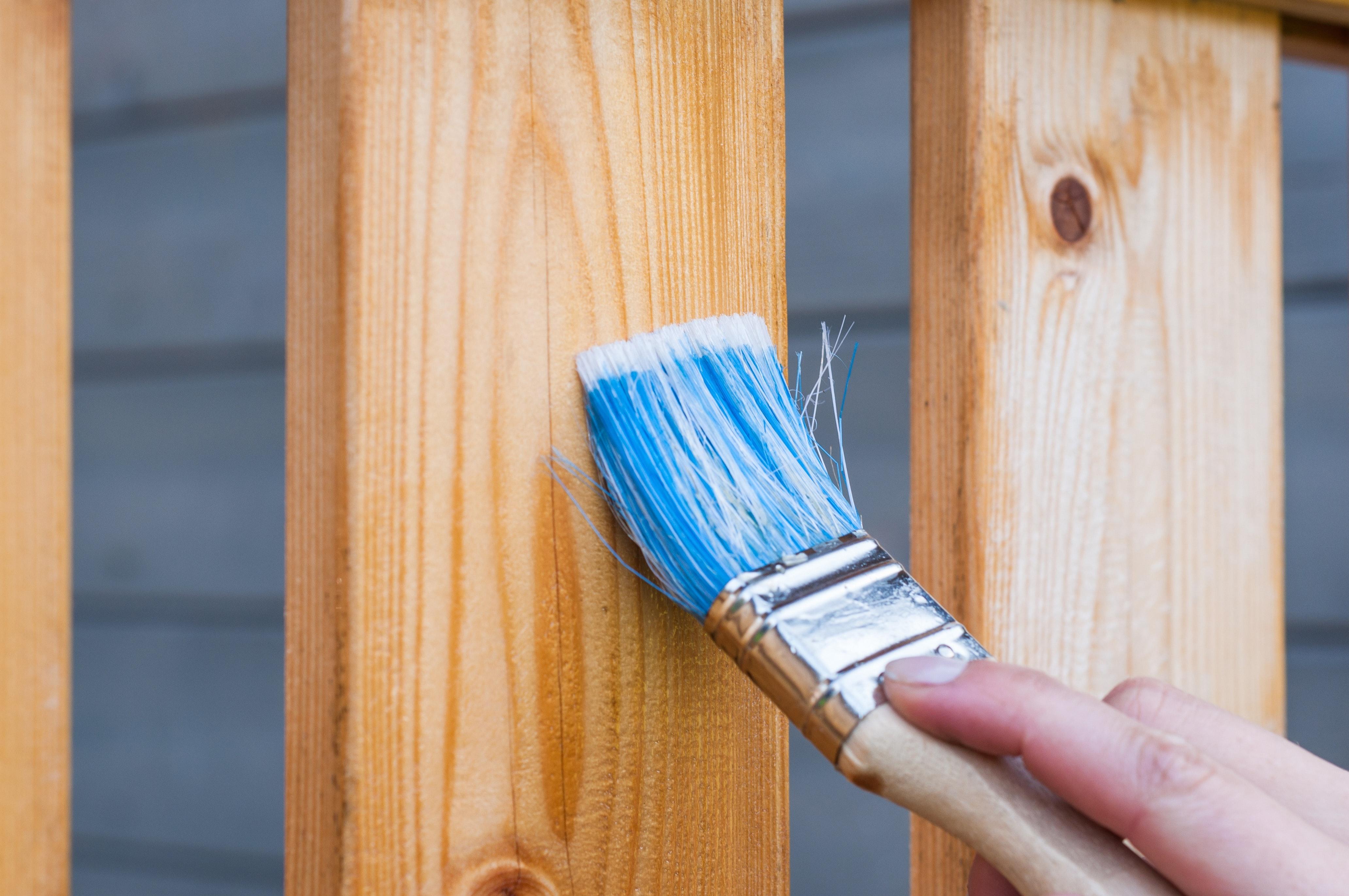Are you considering using skim coat on plywood but not sure if it’s a good idea? You’ve come to the right place! In this blog post, we’ll dive into the topic and answer all your burning questions. From whether or not you need to sand after applying a skim coat to plywood, to the best joint compound for the job, we’ll cover it all.
Skim coating, also known as skim plastering or skim finishing, is a technique used to create a smooth and even surface on various substrates. While it’s commonly used on drywall, many people wonder if it can be used on plywood as well. The answer is yes, you can indeed use skim coat on plywood, but there are a few considerations to keep in mind.
So, if you’re ready to learn more about using skim coat on plywood and want to achieve a flawless finish, keep on reading!
Can You Use Skim Coat On Plywood
Skim coating is a popular technique used to smooth out rough surfaces before applying paint or other finishing materials. But can you use skim coat on plywood? Let’s dive into this question and find out!
The Basics of Skim Coating
Before we get into the specifics of using skim coat on plywood, let’s briefly go over what skim coating actually entails. Skim coating involves applying a thin layer of joint compound or a specialized skim coat product over a surface to create a smooth and even finish. It helps to fill in imperfections, such as cracks, uneven textures, or rough surfaces, and provides a solid base for paint or wallpaper.
Plywood and Skim Coating
Plywood, being a porous and uneven material, can present challenges when it comes to skim coating. The surface of plywood tends to absorb moisture, which can affect the drying and bonding process of the skim coat. Additionally, the grain and imperfections in the plywood can show through the skim coat, affecting the final appearance.
Preparing the Plywood
To achieve a successful skim coat on plywood, proper preparation is key. Start by thoroughly sanding the plywood surface to smooth out any rough areas or imperfections. This step will promote better adhesion and reduce the absorption of moisture by the plywood.
Priming the Plywood
After sanding, it’s essential to apply a high-quality primer specifically designed for plywood. Priming helps seal the porous surface of the plywood, creating a barrier that prevents the skim coat from being absorbed too quickly. This step improves the bonding and drying process of the skim coat, ultimately leading to a smoother finish.
Choosing the Right Skim Coat
Not all skim coat products are created equal, and choosing the right one for plywood is crucial. Look for a skim coat product that is specifically formulated for use on porous surfaces like plywood. These products typically contain additives that improve adhesion and reduce the appearance of wood grain and imperfections. Be sure to follow the manufacturer’s instructions for application and drying times.
Applying the Skim Coat
When applying the skim coat, use a smooth, even motion to spread it over the plywood surface. Work in small sections, ensuring that the coat is applied thinly and evenly. Multiple thin coats may be necessary to achieve the desired smoothness, so be patient and allow each coat to dry completely before applying the next.
Sanding and Finishing
Once the skim coat is dry, sand the surface lightly to remove any imperfections or rough spots. Use a fine-grit sandpaper and be gentle to avoid damaging the coat. After sanding, wipe away any dust with a clean cloth or vacuum cleaner.
To further enhance the appearance and durability of the skim coat on plywood, consider applying a topcoat of paint or a protective finish. This will not only provide a beautiful finish but also add an extra layer of protection to the surface.
Using skim coat on plywood is possible and can help you achieve a smooth and polished surface. However, proper preparation, priming, and choosing the right skim coat products are essential for the best results. By following these steps and taking your time, you can transform your plywood surface into a flawless canvas ready for your desired finishing touches. Happy skim coating!
FAQ: Can I Use Skim Coat On Plywood
Do you need to sand after applying a skim coat?
After applying a skim coat on plywood, sanding is not always necessary, but it can help achieve a smoother finish. Sanding the skim coat lightly with fine-grit sandpaper can remove any imperfections and create a more even surface for painting or further finishing.
Can you apply a skim coat directly onto wood?
Yes, you can apply a skim coat directly onto wood surfaces, including plywood. However, it is essential to prepare the wood properly before applying the skim coat. Make sure the wood is clean, dry, and free from any loose particles or debris. Applying a suitable primer or sealer beforehand can enhance adhesion and improve the overall quality of the skim coat.
What is the best joint compound for skim coating plywood?
The best joint compound for skim coating plywood is a lightweight, high-quality compound specifically designed for skim coating. Look for products labeled as “skim coat” or “mud” compounds. These types of joint compounds have excellent adhesion properties, making them ideal for plywood surfaces.
Can plywood be skim coated?
Yes, plywood can be skim coated to create a smooth, even surface. Before applying the skim coat, ensure the plywood is clean and free from any loose fibers or imperfections. Applying a suitable primer or sealer will enhance adhesion and minimize the risk of the plywood absorbing too much moisture from the skim coat.
Can you skim coat over painted plywood?
Yes, you can skim coat over painted plywood, but it is crucial to prepare the surface properly for better adhesion. Start by cleaning the painted plywood and removing any loose or flaking paint. Lightly sanding the surface can help create a smoother texture for the skim coat to adhere to. Applying a primer before skim coating can further improve adhesion.
How do you skim coat plywood?
To skim coat plywood, follow these steps:
- Clean the plywood surface thoroughly and remove any loose particles or debris.
- If necessary, sand the surface lightly to create a smoother texture.
- Prime the plywood with a suitable primer or sealer to enhance adhesion and prevent the plywood from absorbing excessive moisture.
- Apply a thin layer of high-quality skim coat compound using a trowel or putty knife, spreading it evenly over the plywood surface.
- Allow the skim coat to dry completely, usually within 24 to 48 hours.
- If necessary, sand the dried skim coat lightly to remove any imperfections.
- Repeat the skim coating process with an additional layer if a smoother finish is desired.
- Once the skim coat is dry and smooth, the plywood is ready for further finishing, such as painting or wallpapering.
Can you apply a skim coat over primer?
Yes, you can apply a skim coat over a primer. In fact, applying a primer before skim coating can improve adhesion and create a more durable and even finish. Make sure the primer is dry and fully cured before applying the skim coat.
Does Multi Finish plaster stick to plywood?
Yes, Multi Finish plaster can stick to plywood surfaces. However, it is essential to properly prepare the plywood surface before applying the plaster. Ensure the plywood is clean, free from loose fibers, and sealed with a suitable primer or sealer. This will enhance adhesion and prevent the plywood from absorbing excessive moisture from the plaster.
What type of paint should you use on plywood?
When painting plywood, it is advisable to use a high-quality latex or oil-based paint. Both types can provide good coverage and durability. Latex paints are easier to clean up and have less odor, while oil-based paints offer superior durability and a smoother finish. Choose a paint specifically formulated for wood surfaces, and consider using a primer before painting for enhanced adhesion and better results.
Can you skim coat over Gardz?
Yes, you can skim coat over Gardz. Gardz is a water-based sealer and primer that is commonly used on damaged or porous surfaces. It forms a smooth, non-porous barrier that helps to prevent further damage or moisture absorption. Skim coating over Gardz can provide a solid foundation and ensure a smoother and more even finish.
How can you make plywood walls look good?
To make plywood walls look good, you can follow these tips:
- Fill any gaps or imperfections with a suitable wood filler or putty and sand the surface to create a smooth texture.
- Apply a primer specifically designed for wood surfaces to enhance adhesion and create a uniform base.
- Use a high-quality paint or stain to add color and protect the plywood. Consider using multiple coats for a more vibrant and durable finish.
- If desired, apply a clear topcoat or sealant to further protect the plywood and add a glossy or matte finish.
- Incorporate decorative elements such as wallpaper, stenciling, or decals to add texture and visual interest to the plywood walls.
Does bonding compound stick to wood?
Yes, bonding compound can stick to wood surfaces, including plywood. Bonding compound, also known as bonding plaster or universal skim coat, is specifically designed for a variety of substrates, including wood. It offers excellent adhesion properties, allowing it to adhere securely to wood surfaces and provide a smooth and durable finish.
Should you prime before applying a skim coat?
Priming before applying a skim coat is beneficial and recommended. Priming helps improve adhesion, prevents excessive absorption of moisture from the skim coat, and promotes a more even and durable finish. Select a primer suitable for the specific surface, such as plywood, and allow it to dry completely before applying the skim coat.
Can you tape and float plywood seams?
Yes, you can tape and float plywood seams to achieve a seamless and smooth finish. To do this, apply a layer of joint compound over the seams and embed a suitable drywall joint tape into the compound. Then, apply another layer of joint compound over the tape, feathering the edges to create a seamless transition. After the compound dries, sand the area lightly and apply additional coats if necessary before finishing the plywood surface.
Can you plaster directly onto wood?
Plastering directly onto wood is generally not recommended. Wood has a natural tendency to expand and contract with changes in humidity and temperature, which can cause plaster to crack or delaminate. It is best to prepare the wood surface properly by applying a suitable primer or sealer before plastering. This will improve adhesion and provide a more stable base for the plaster.
Can joint compound be used as a skim coat?
Yes, joint compound can be used as a skim coat. Joint compound, also known as drywall mud, can be applied in thin layers to create a smooth and even surface. However, it is important to choose the right type of joint compound for skim coating. Look for lightweight or all-purpose compounds specifically labeled for skim coating or finishing applications.
How long after applying a skim coat can you paint?
The drying time for a skim coat can vary depending on factors such as humidity, temperature, and the thickness of the applied coat. Generally, a skim coat will dry within 24 to 48 hours. However, it is recommended to wait at least 48 hours before painting to ensure that the skim coat is fully dry and hardened. Always refer to the product instructions for specific drying times and recommendations.

